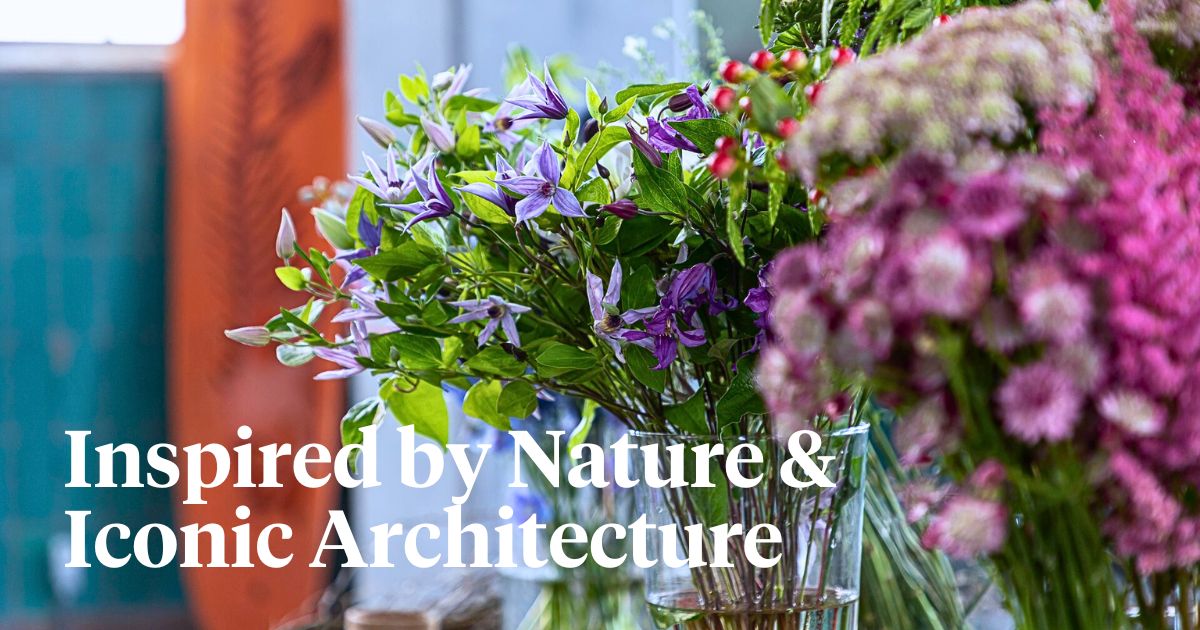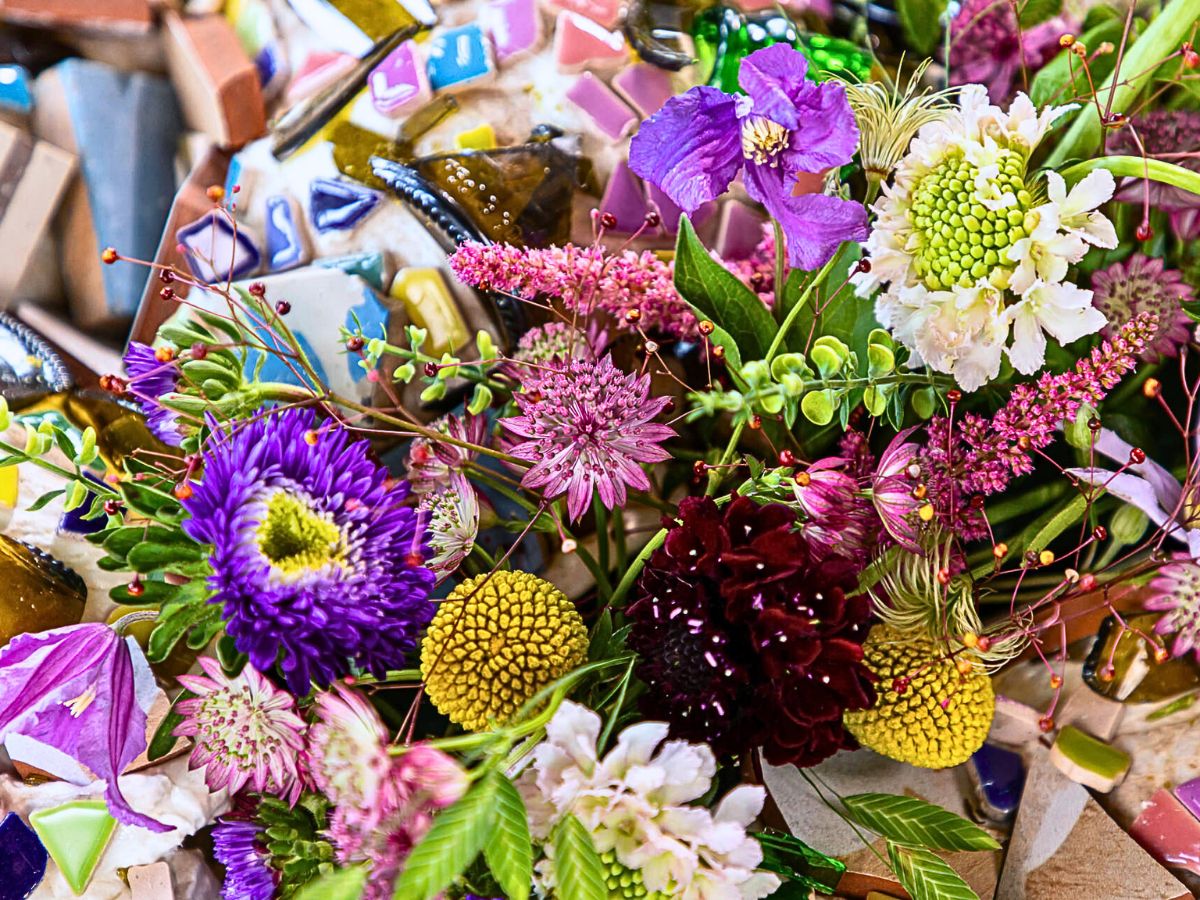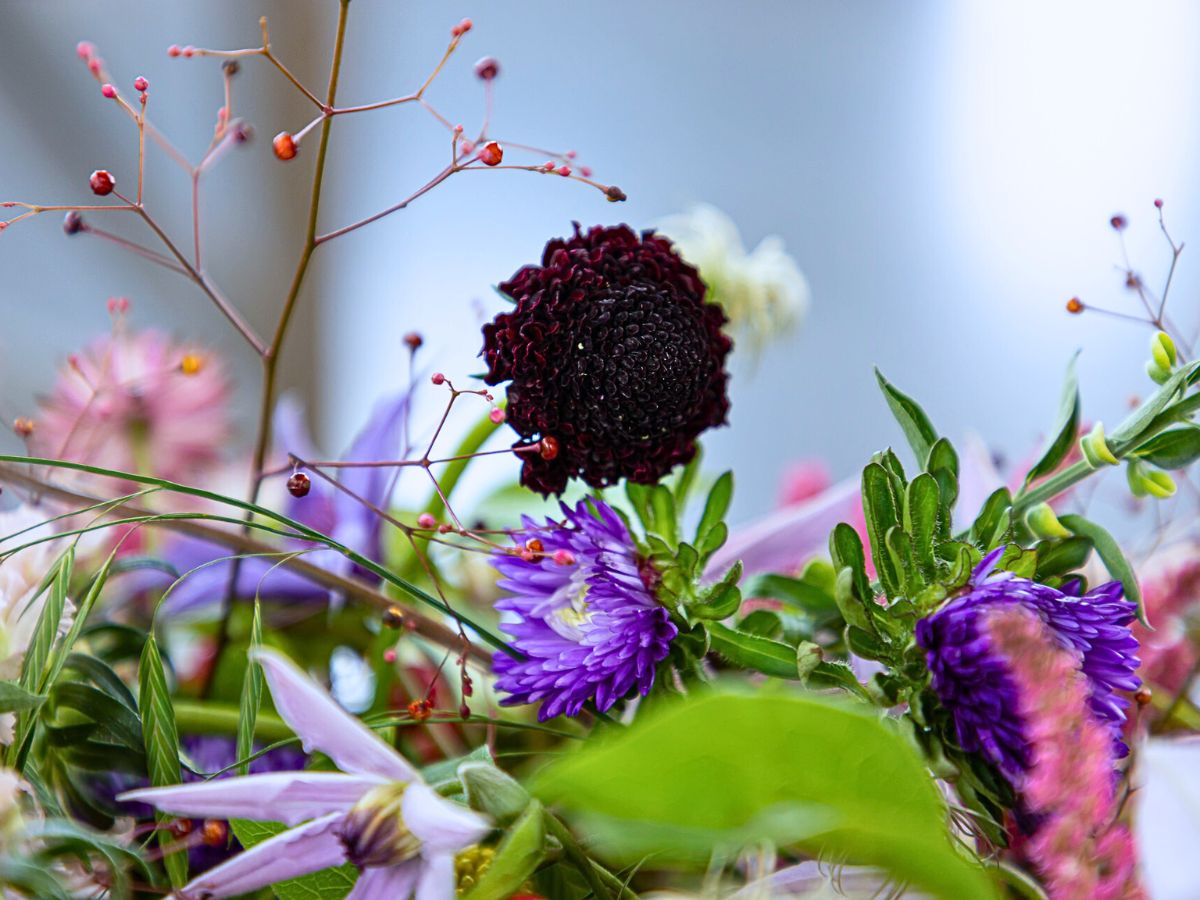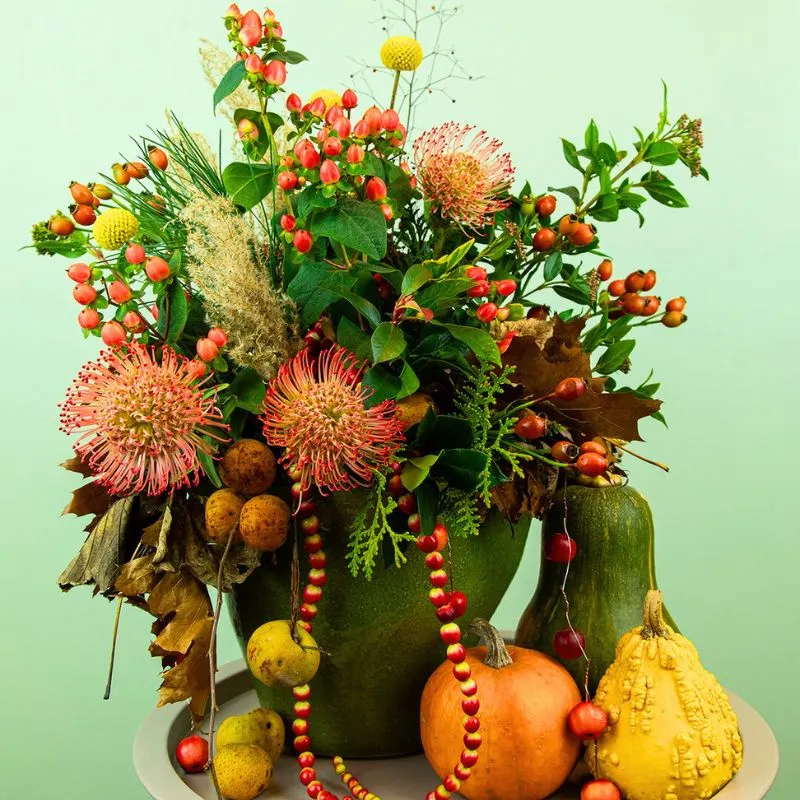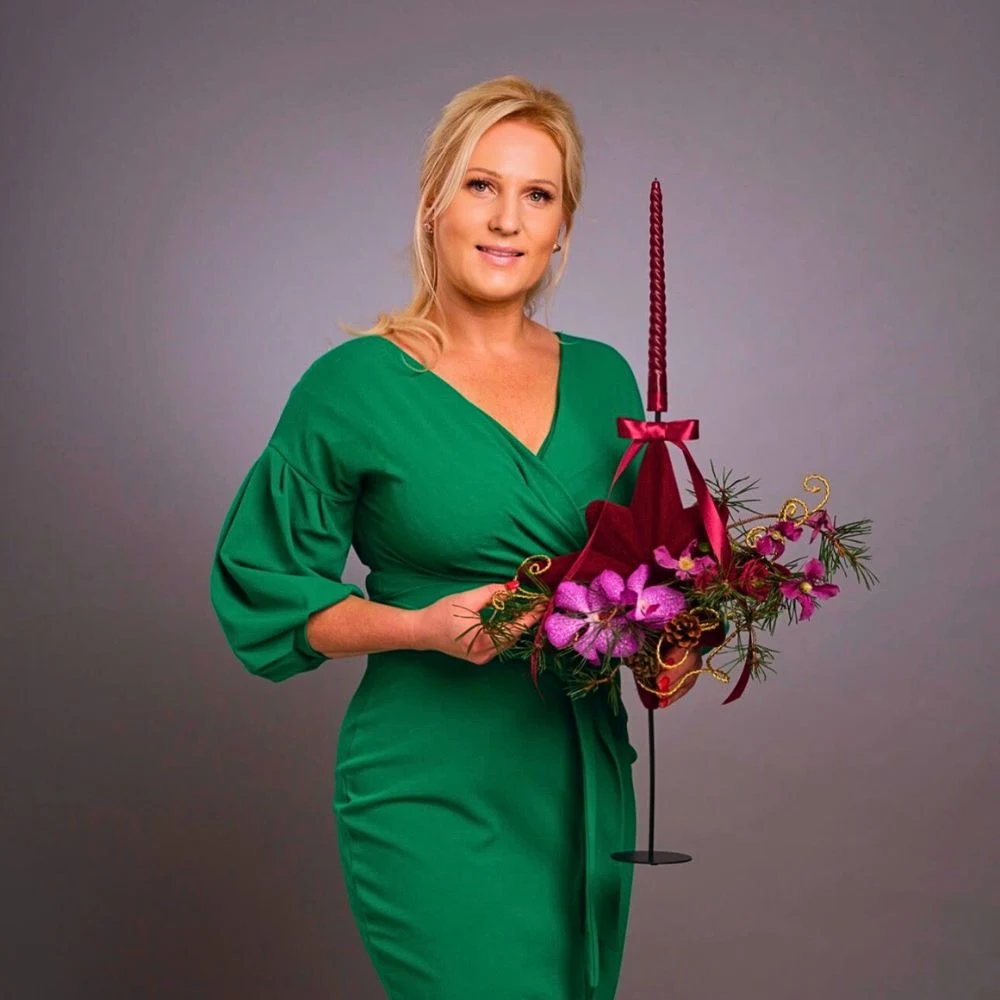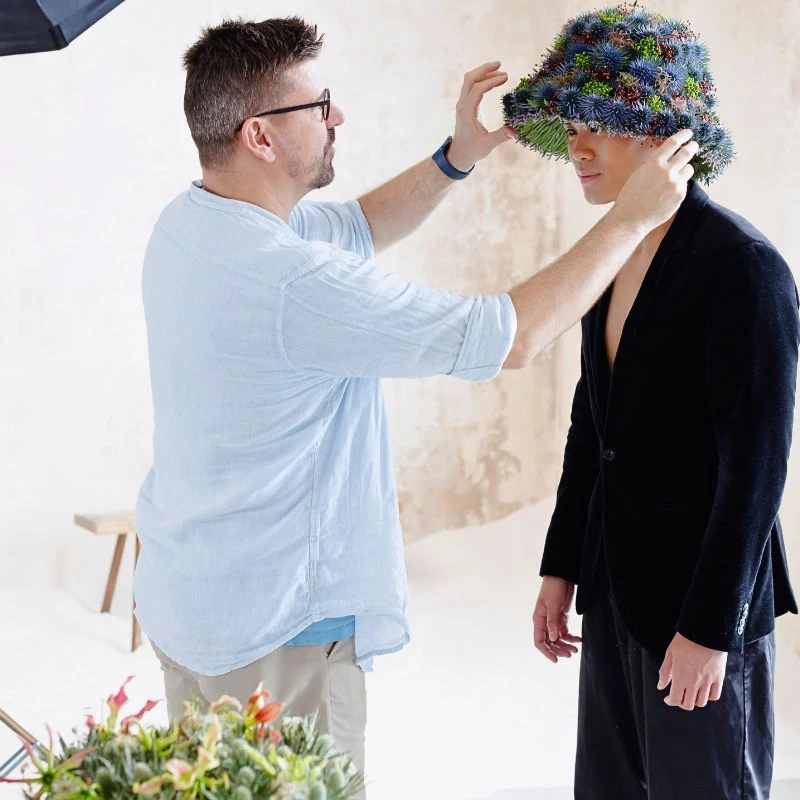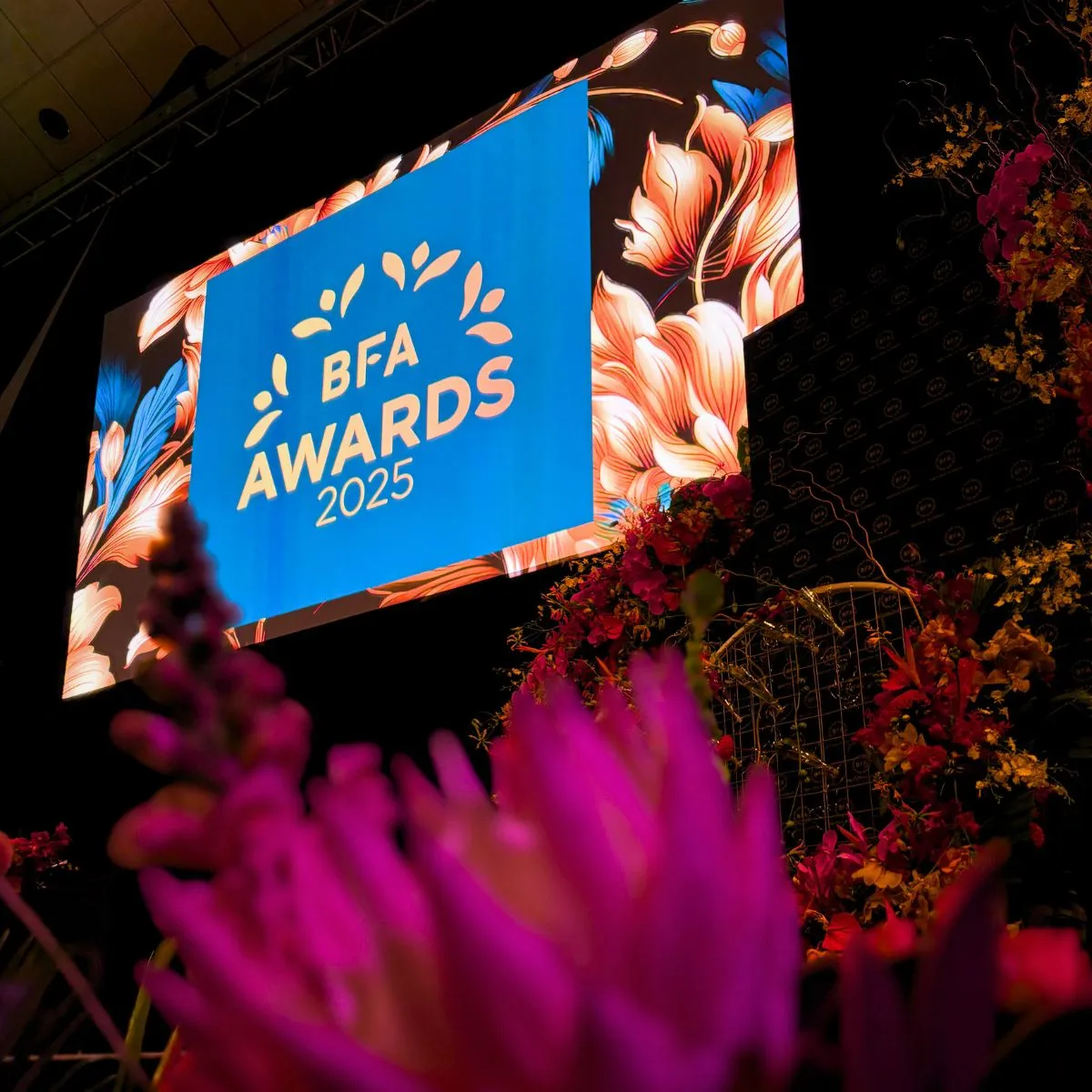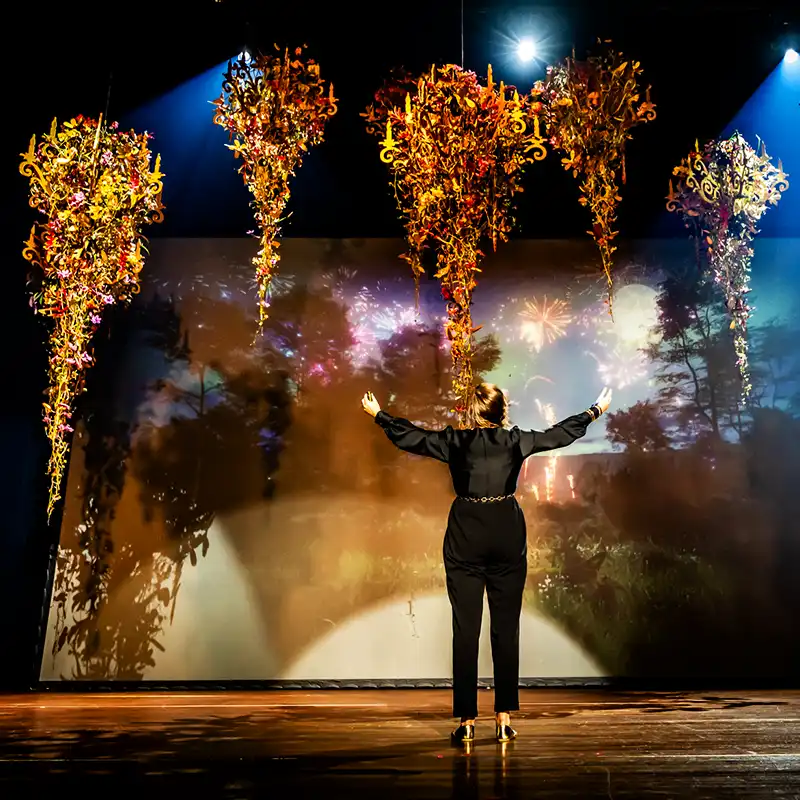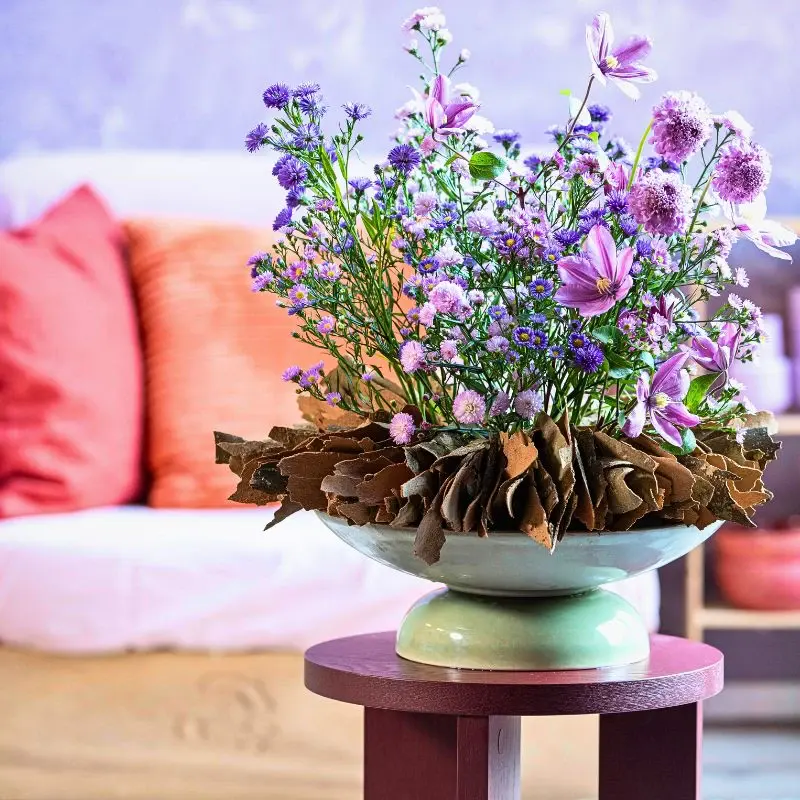Floral and interior designer, Samantha ‘Sam’ Wilhelm is known to combine her passion and talent for floral art, and interior design. A specialist in event floristry, concept development, photoshoots, design, and interior decoration, her floral design work is often characterized by finesse, a subtle approach with an eye for detail where every element has meaning or purpose.
Sam, creative project leader at Purple-Wire, the independent marketing agency of FM Group, has a way of bringing art history to life through floral arrangements. In her ‘Masterpieces by Sam’ series, this was evident in her use of Marginpar’s exquisite flowers that brought to life Catalan architect, Antoni Gaudí’s (1852-1926) exuberant, elegant, and organic form designs.
Showcasing the Famous Art Nouveau Movement Through Flowers
In the third episode of her series, Sam — who also runs her own company, met Finnes, where she combines her passion and talent for floral art and interior design — explores Gaudí’s and the Art Nouveau movement. She uses an assortment of flowers from Marginpar to create a stunning floral masterpiece that highlights several of the architectural icon’s designs.
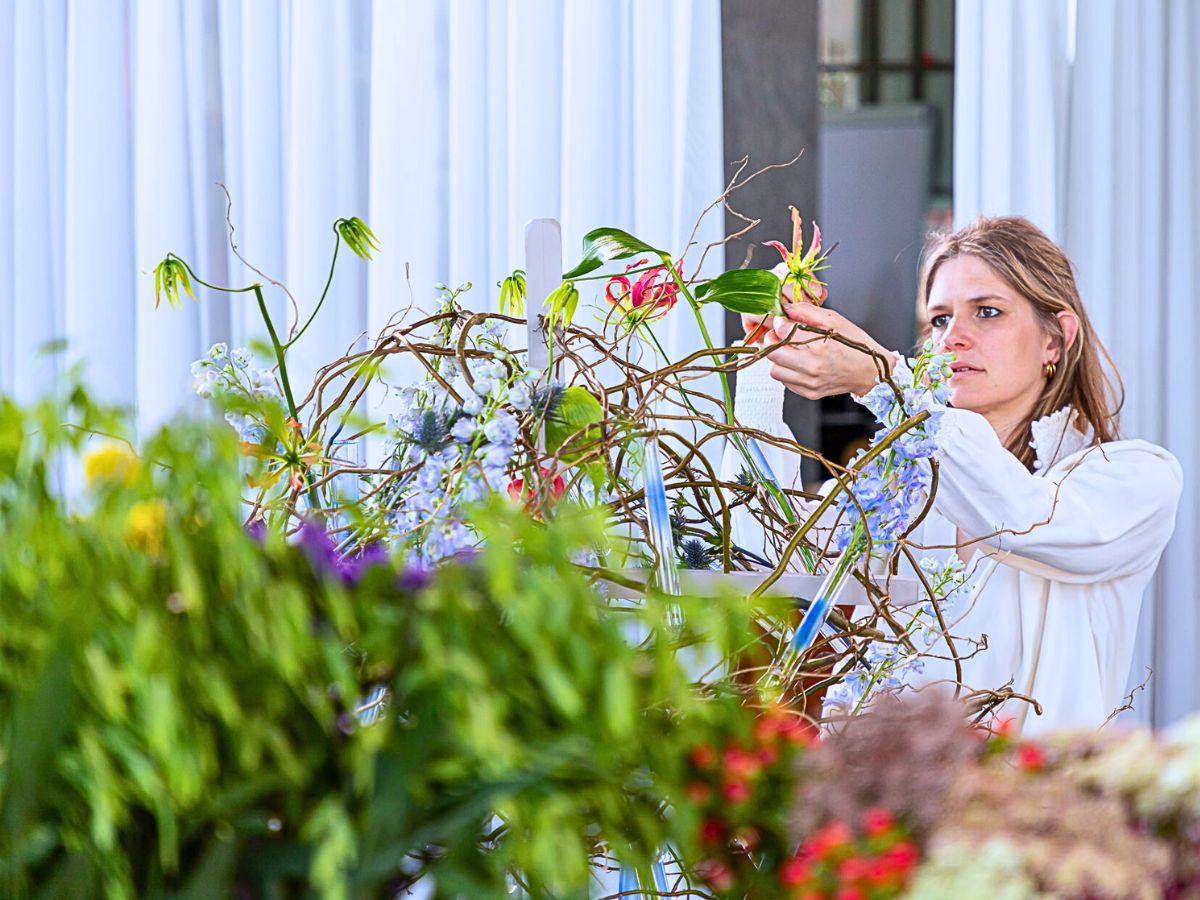
Using a wide range of Marginpar flowers available through FleuraMetz, one of the largest full-service partners for florists worldwide, Sam’s design is a direct reverence to Gaudí's architectural style, characterized by its organic forms, lively colors, and elaborate and inspired by nature. Her attempts, in the series, focus on showcasing the Art Nouveau movement in the history of art, through the artistic lens of floral design.
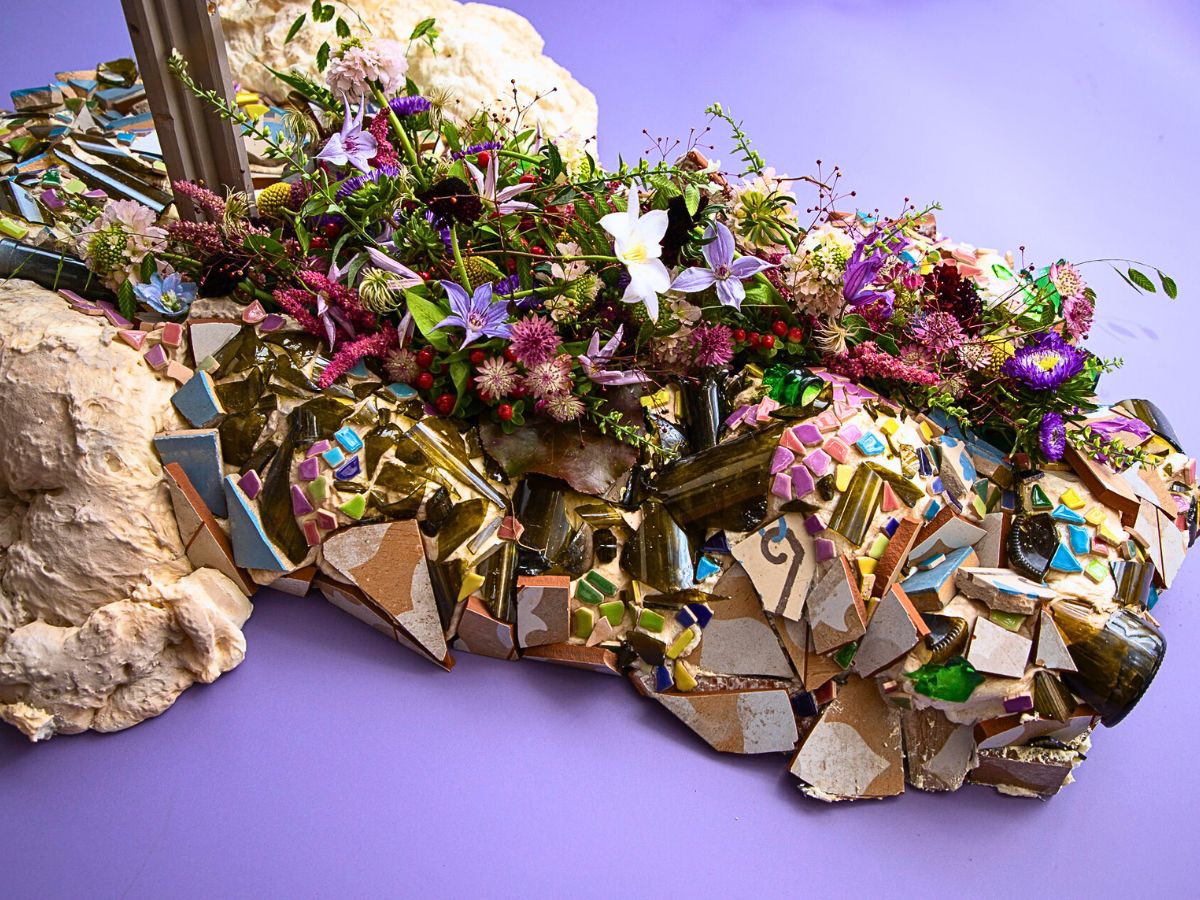
A Floral Tribute to Gaudí and the Art Nouveau Movement
Born in 1852 in Reus, Catalonia - and learned pottery from his father - Gaudí, the celebrated Catalan architect, left quite a mark on Barcelona's architectural landscape. He transformed the city with his organic and colorful style, inspired by nature and religion.
Gaudí designed many iconic buildings, such as the Sagrada Família Basilica, the Park Güell, the Casa Batlló, and the Casa Milà, marrying Gothic, Moorish, and Art Nouveau elements with curved forms, mosaic tiles, stained glass, and ironwork, to create a unique and expressive aesthetic.
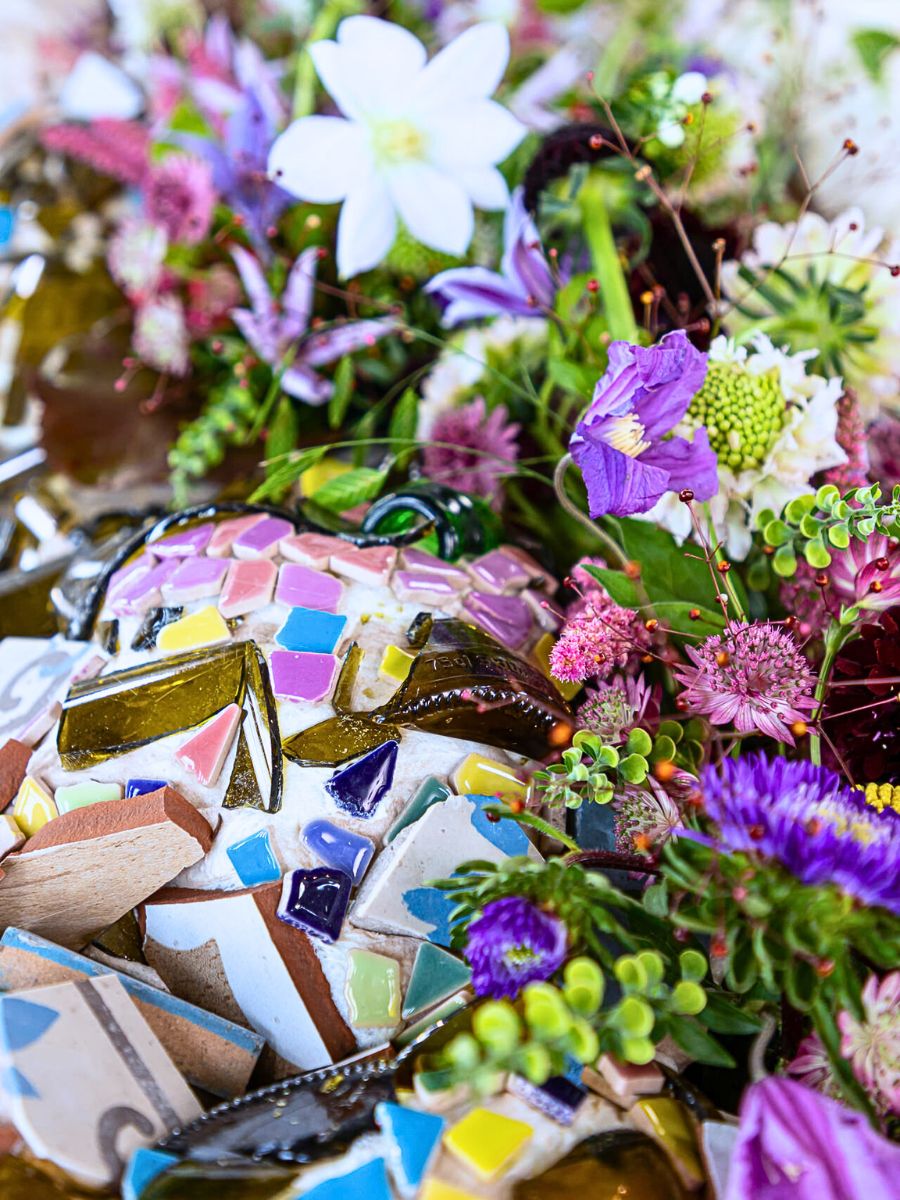
His work is defined by its organic forms and intricate details and epitomizes the Art Nouveau style, a movement that flourished in Europe between 1890 and 1914. In fact, Gaudí is one of the most famous architects of this art style which is also known as Jugendstil.
Nature was the primary inspiration for Art Nouveau, influencing its flowing lines, plant-like motifs, and exuberant spirit. For instance, Gaudí's iconic Sagrada Família Basilica, has soaring pillars that look a lot like tree trunks, demonstrating his organic approach to architecture. Did you know that the construction of this enormous church started already back in 1915? And that it is so big and complex that it's due to be completed no earlier than in 2026, precisely one century after his death?
The Sagrada Família exemplifies his unique style, featuring unusual shapes that seek to make architecture an organic part of nature. His mosaics, often made from ceramic shards, are another hallmark of his style, as seen in Barcelona's Park Güell.
In her design, Sam’s floral interpretation of Gaudí's style, accordingly, incorporates a variety of flowers to pay homage to the architect's mastery of form and his deep connection with nature, which serves as the inspiration for this style, as reflected in its plant-like shapes and motifs.
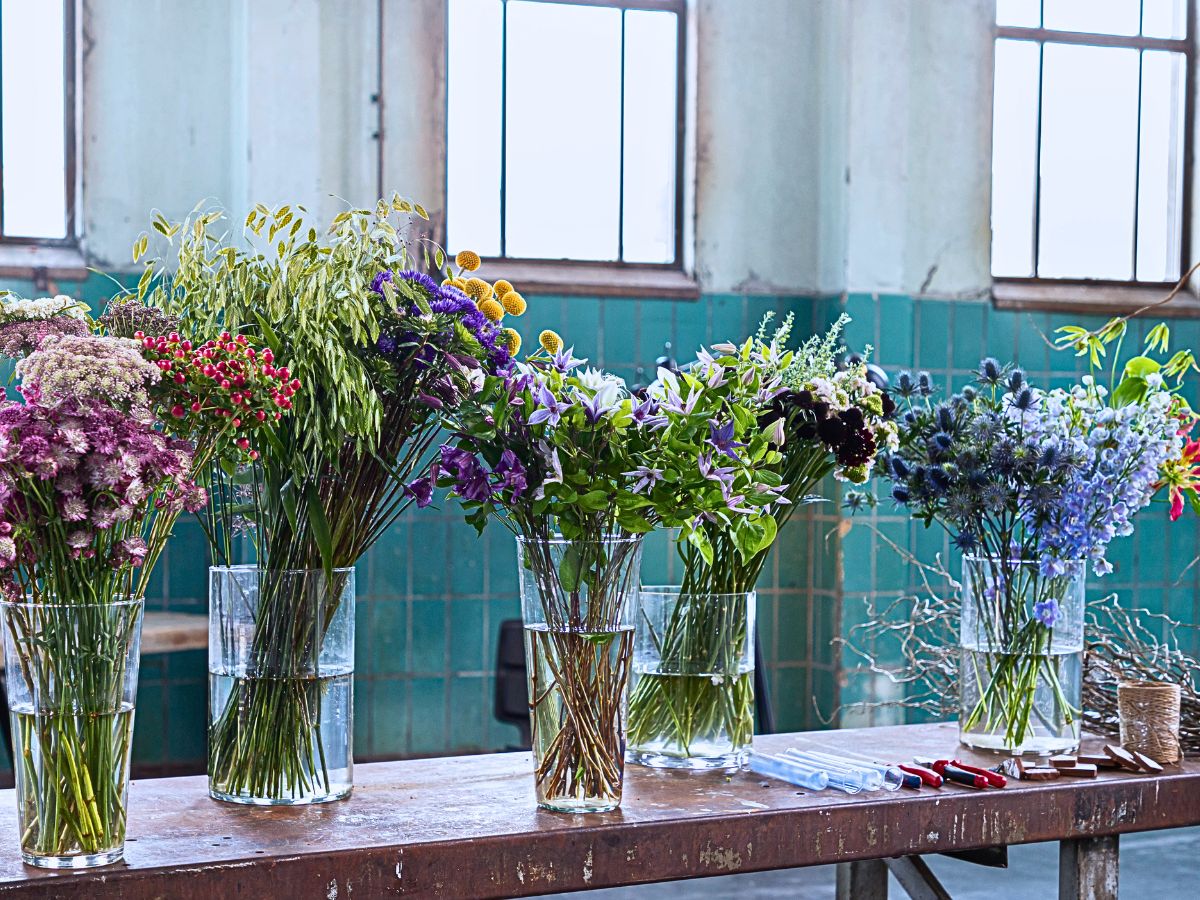
The Structure of the Design: An Interplay of Floral Textures and Colors
The floral arrangement's centerpiece is a large vertical cross constructed from Salix branches, reminiscent of the tree-trunk-like pillars in the Sagrada Família. In this case, the Salix branches are festooned with test tubes filled with flowers to create a sense of airy lightness that mirrors the basilica's light-filled interior.
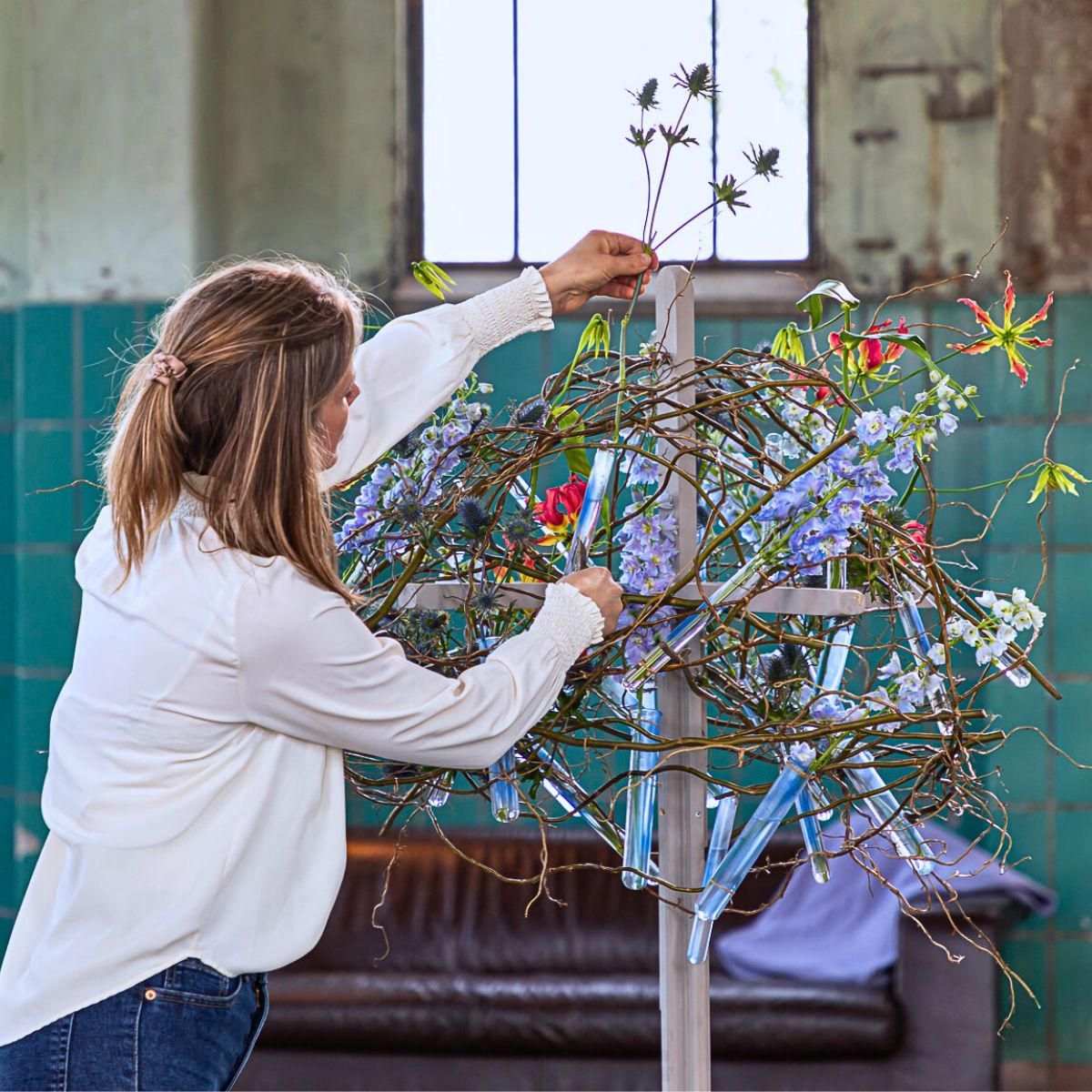
The cross shape is repeated at the base of the structure, covered in polyurethane for a smooth, organic, and natural-looking finish. It is also adorned with a colorful mosaic inspired by the bench in Park Güell as well as glass shards evocative of the roof of Casa Milà - yet another famous building by the renowned architect.
Sam’s choice of flowers for the airy, transparent top of the design includes the rich blue Eryngium Supernova Questar®, Delphinium Guardian Lavender, and Gloriosa Superba Simba Fifty Shades.
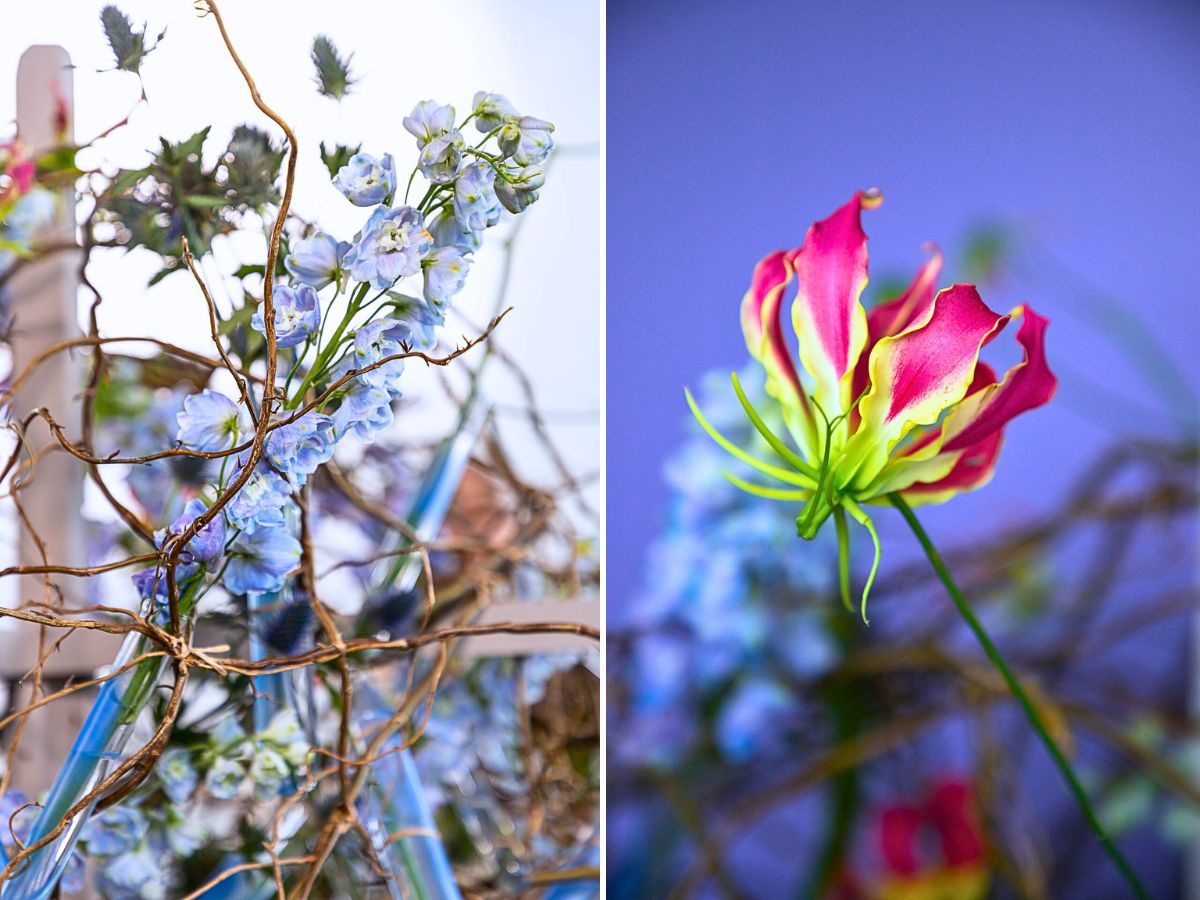
The Delphinium and Gloriosa are perfect for the Art Nouveau style due to their striking shape and playful, flexible stems. The Salix branches in the shape of a shield create a feeling of protection without being too domineering, echoing the atmosphere in the Sagrada Família which stands out from other such churches with its light, colorful interior. The flowers used perfectly embody the Art Nouveau style.
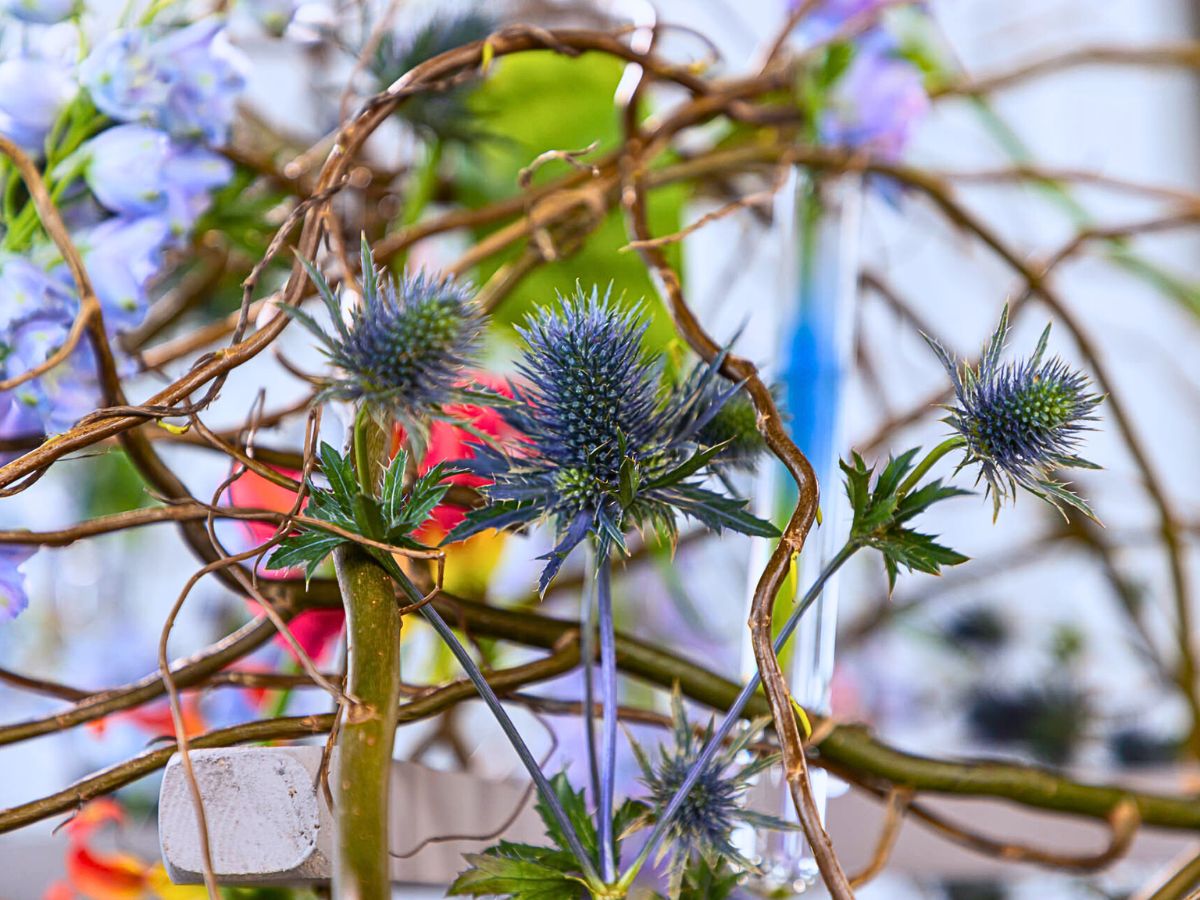
The Base of the Design and Its Floral Mosaic
The base of the arrangement is a colorful mosaic of flowers, showcasing the diversity and beauty of nature, just what the art movement was all about. Sam begins with the elegant Scutellaria and Chasmanthium Latifolium Mantis then adds colorful Astilbe, Astrantia, Hypericum, and Callistephus.
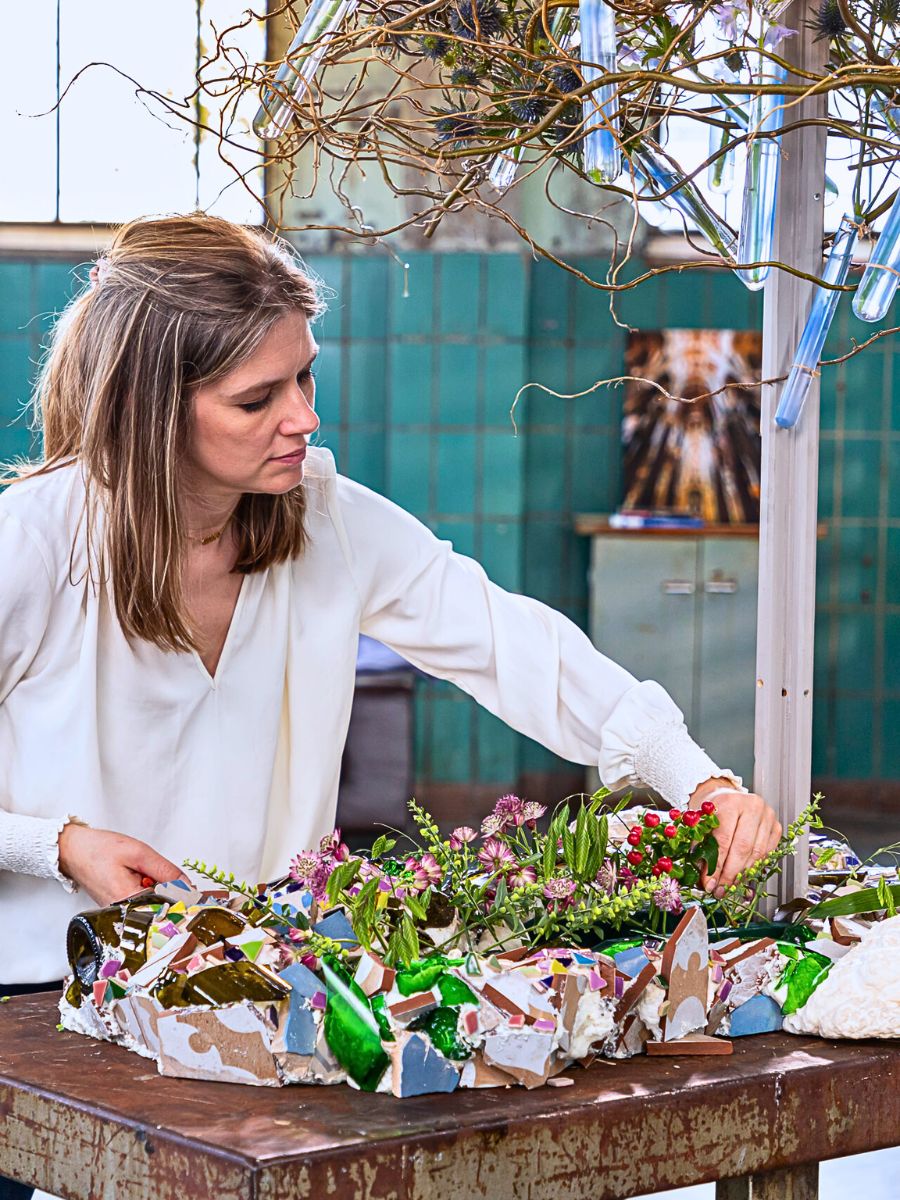
Next comes the deep red Scabiosa Maraschino which provides contrast, adding depth and richness to the composition, and finally, she incorporates Talinum Long John, Clematis Amazing® Vienna, and Clematis Amazing® Miami, emphasizing the subtle beauty and intricate details of each flower.
Sam explains:
"For me, Talinum is a game-changer in a piece. At first glance unassuming, but on closer inspection, it is the most valuable flower for me, adding more depth and refinement to the piece."
A Masterful Curated Floral Interpretation of Gaudí’s Work in Art Nouveau
In the end, Sam’s floral composition, truly, captures and showcases her finesse and subtle approach with an eye for every detail using flowers including Eryngium Supernova Questar®, Gloriosa superba Simba Fifty Shades, Delphinium Guardian Lavender, Astilbe Vision in Pink, Astrantia Roma®, Hypericum Tomato Flair®, Clematis Amazing® Vienna, Clematis Amazing® Miami, Scabiosa Bon Bon Scoop™ French Vanilla, Scabiosa Bon Bon Scoop™ Maraschino, Chasmanthium Latifolium Mantis, Scutellaria Tinkerbell, Callistephus Buttons Blue, and Talinum Long John.
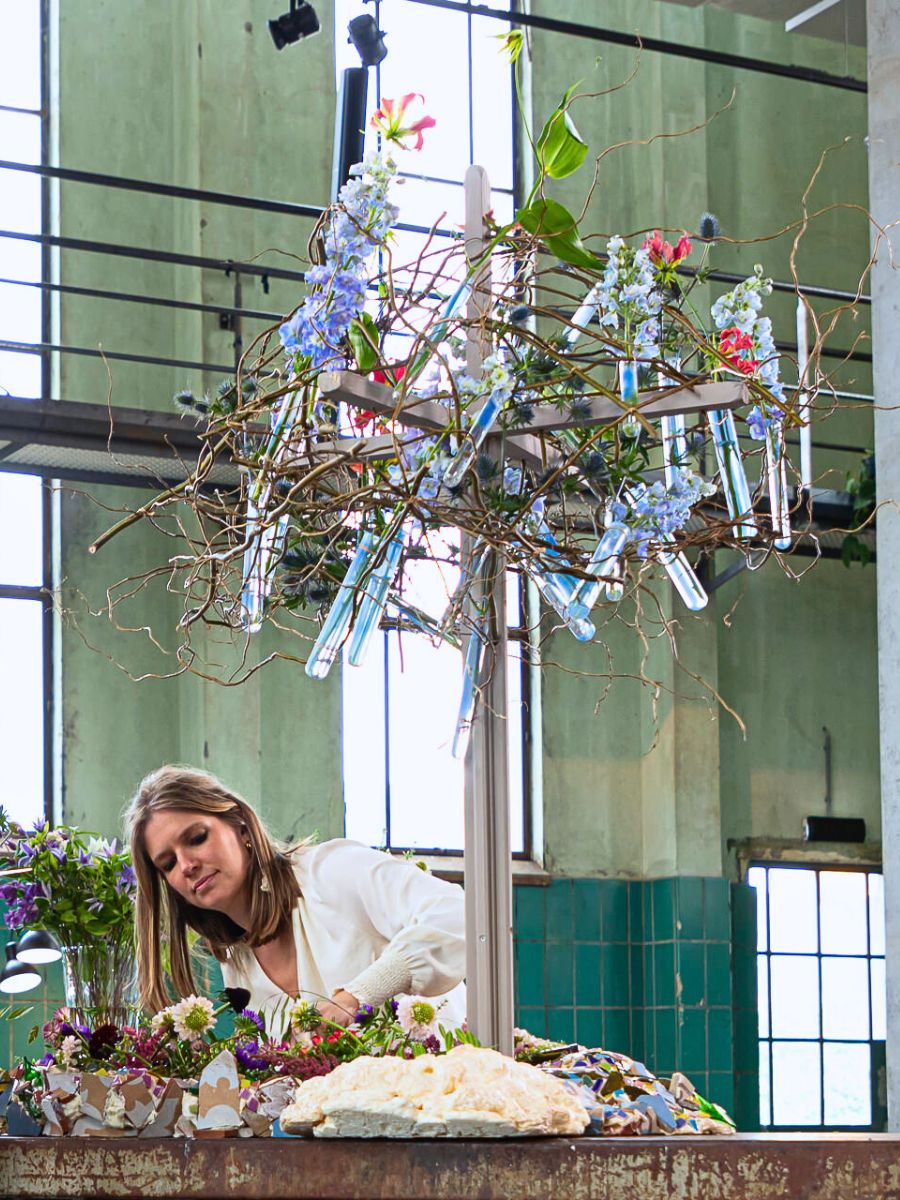
The design, in its own way, brings the essence of this art movement to life and demonstrates the floral designer's understanding of both floral art and the Art Nouveau movement; skillfully combining the movement's key elements – organic forms, rich colors, and elaborate details – with flowers' unique beauty and versatility.
Feel like lingering a bit more and learning about how Samantha created her designs? Then watch this 10-minute YouTube video (German with Dutch subtitles) by FM Group:
Photos and video by FM Group, featuring flowers from Marginpar.

